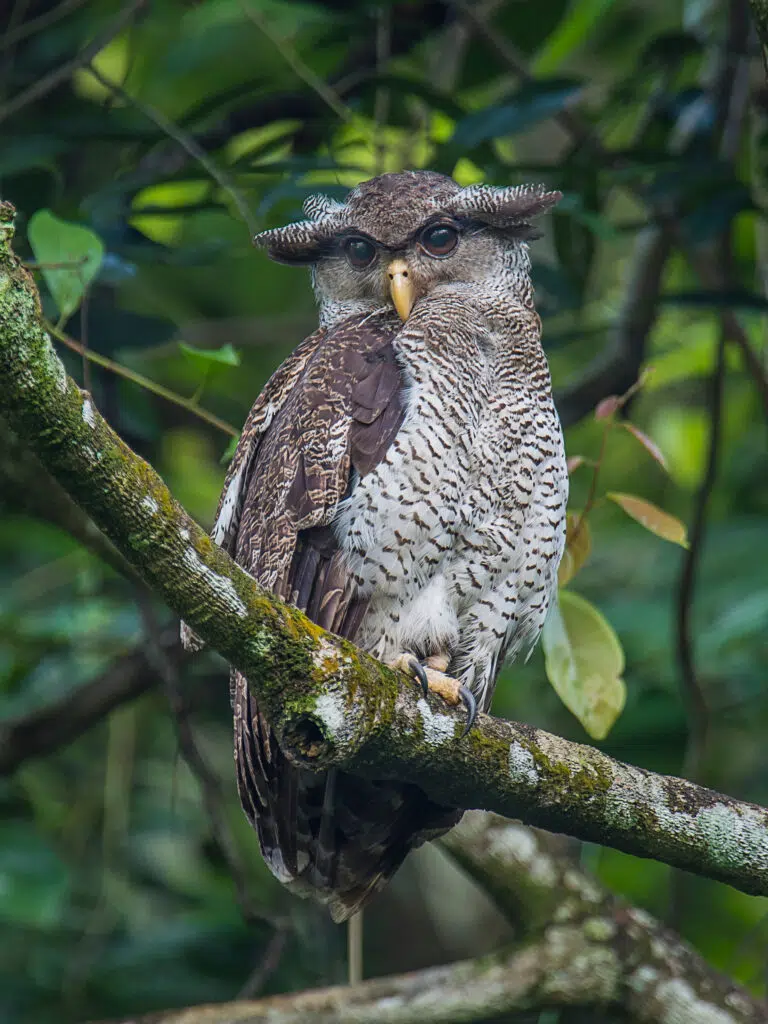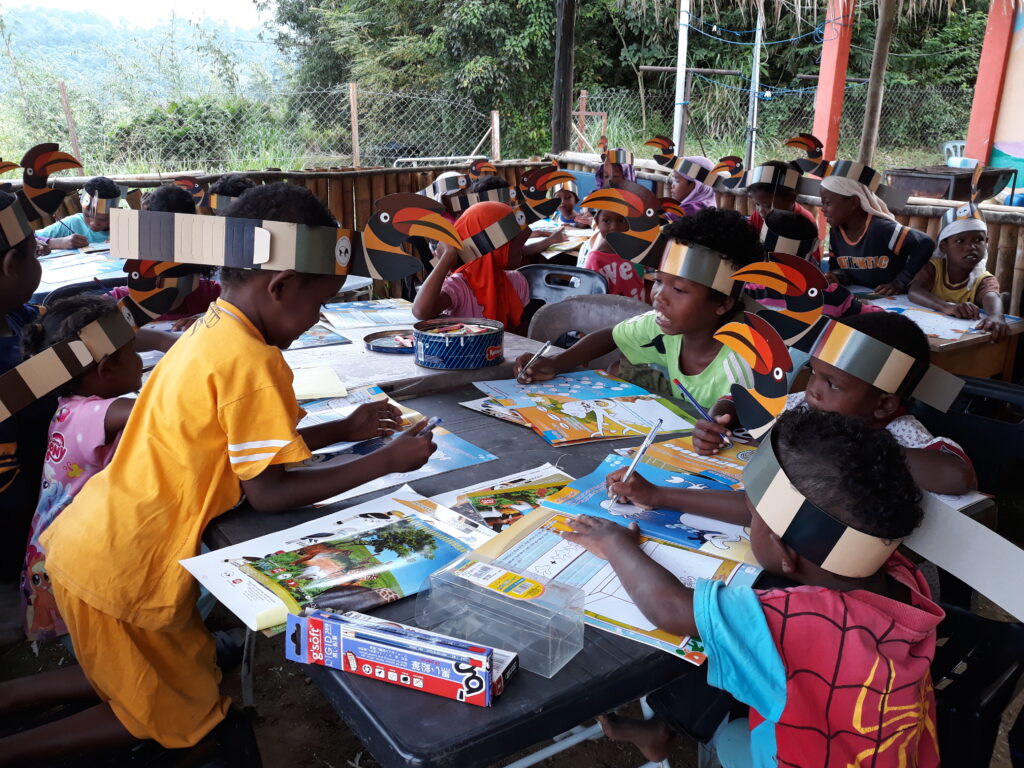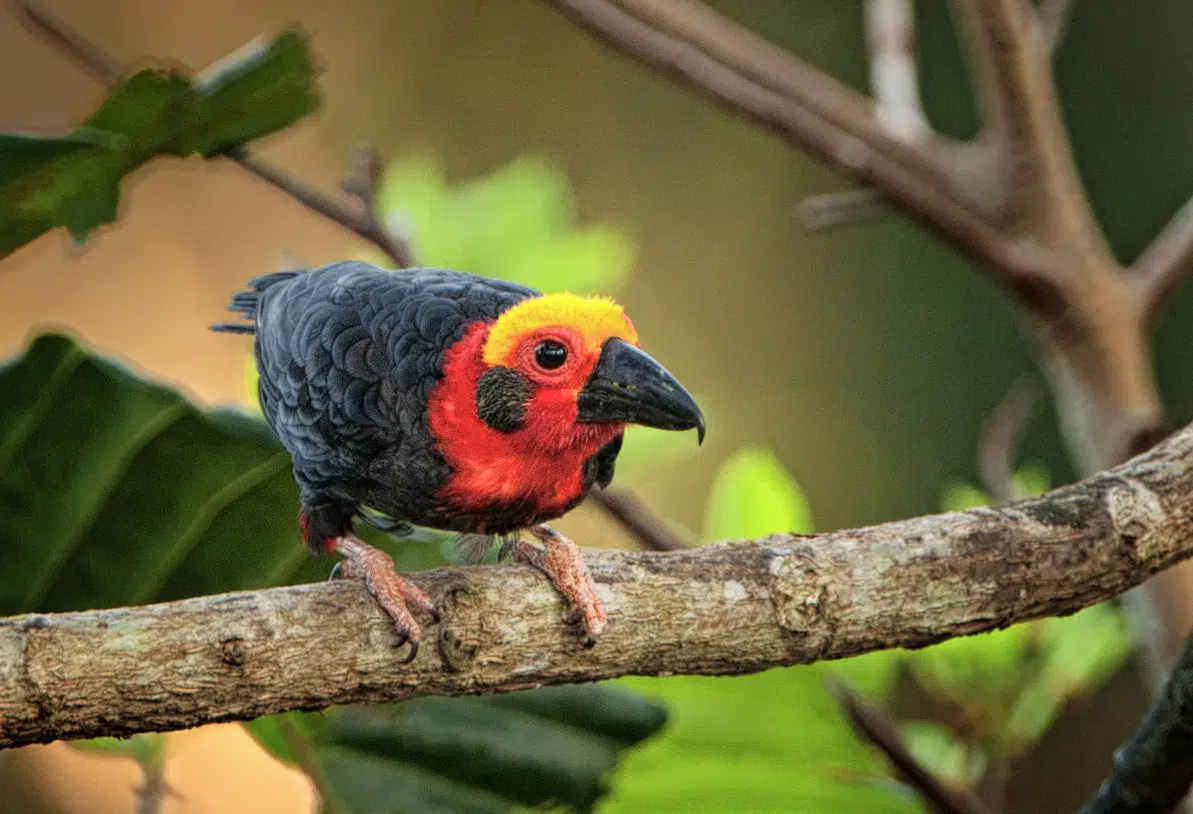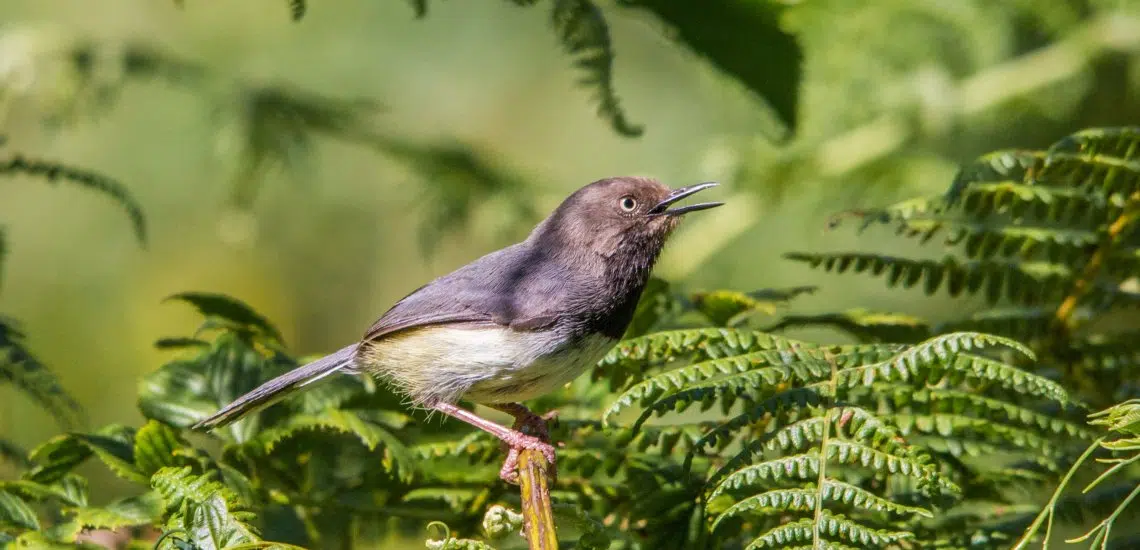Lost: Accelerating deforestation a major threat to birds
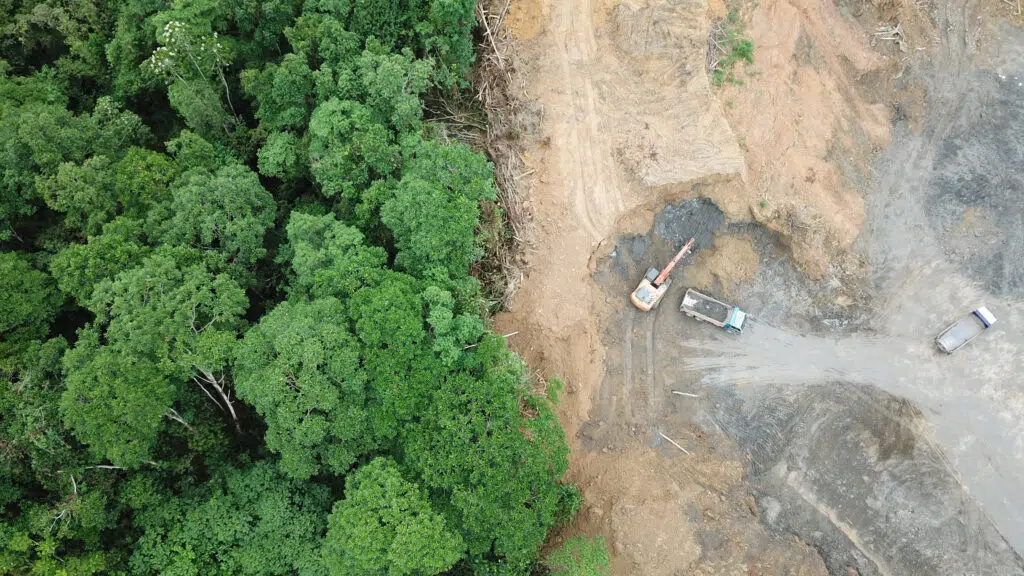
Vast areas of forest are being cleared at an alarming rate and, as 2022’s IUCN Red List update reveals, deforestation is a key threat to many bird populations, especially in tropical regions. We look at some of the worst-affected areas, the threatened species that inhabit them, and the measures being put in place to try and tackle the problem.
By Liam Hughes
Header Image: New satellite data have revealed the full extent of the impact of forest loss, and in many regions it is worse than previously thought © Richard Whitcombe/Shutterstock
Famed for their rich diversity, the unique trove of the millions of species inhabiting tropical forests has inspired numerous stories, accounts and ambitious expeditions throughout history. More recently, the value of this habitat in storing immense quantities of carbon has pivoted it into the spotlight as a critical tool in our fight against climate change.
However, as the human footprint continues to carve into natural areas to meet our seemingly insatiable, and unsustainable, demand for resources, habitat loss, degradation and fragmentation have emerged as the main threats to tropical ecosystems worldwide.
While forest loss has long been recognised as a critical threat to the world’s forest-dependent birds, it is only with the relatively recent advent of accurate remote sensing data, which are based on satellite imagery, that the realities of its impact can be quantified. A collaboration with the World Resources Institute, which runs Global Forest Watch, has enabled BirdLife’s Red List team to reassess how much forest loss has occurred within the ranges of thousands of forest-dependent bird species over the last 20 years.
Although already recognised as a critical threat across the world’s tropical forests, in some regions the scale of devastation has been even worse than scientists had feared. The impact of the accelerating loss of this iconic habitat has seen a flurry of species move to a higher extinction risk category in IUCN’s 2022 Red List update for birds.
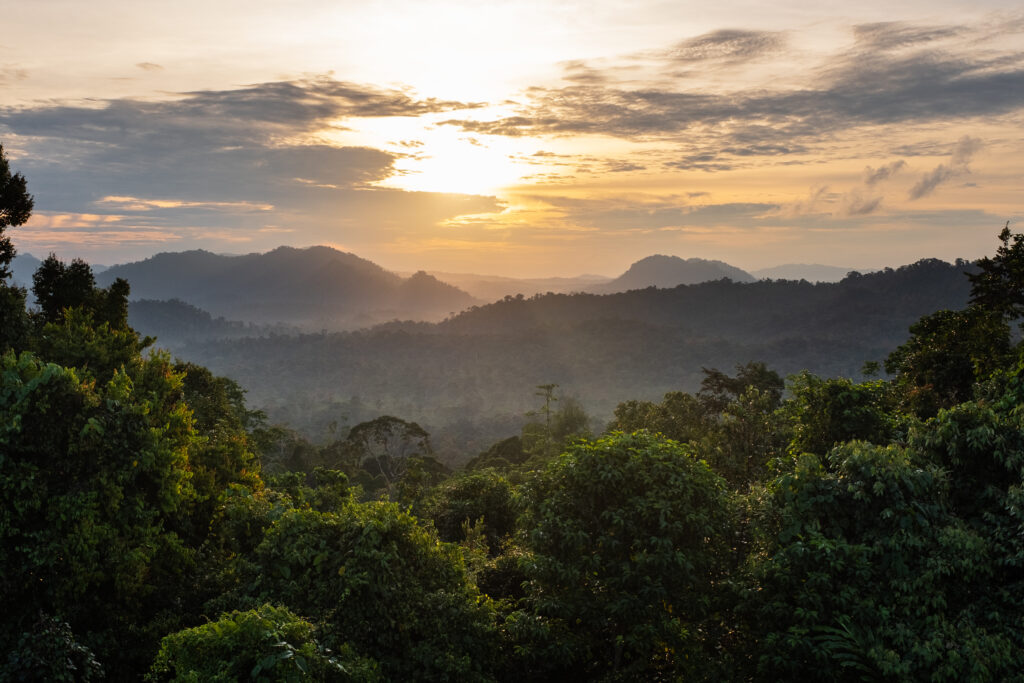
TROUBLE IN SUNDALAND
One of the greatest causes for concern is in South-East Asia, a region that has seen some of the highest rates of forest loss globally over the last 50 years. The data are particularly bleak in Sundaland, an area comprising the Thai-Malay Peninsula and the islands of Borneo, Sumatra and Java. Home to some of the world’s oldest and most biodiverse rainforests, precipitous rates of forest loss across this area have sent some of the world’s most iconic and unique species accelerating towards extinction.
Species in the tropics tend to separate themselves by altitude, with montane and lowland forests often hosting different suites of species. In Sundaland, lowland species are under critical threat, as increasingly accessible tracts of flat, low-lying forest become prime targets for
conversion to plantations and infrastructure projects. The widely publicised clearance of tropical forests for oil palm plantations is a particular issue in Sundaland, and while much focus has been towards its impacts on emblematic mammals such as Orang-utans and Asian Elephants, it is also devastating numerous bird populations, as highlighted in the latest Red List update.
For instance, Malay Crestless Fireback – a pheasant species that once occurred widely across Peninsular Malaysia and Sumatra – was re-evaluated from Vulnerable to Critically Endangered. Between 2001-2021, satellite data indicated that almost 70% of the forests on which it depends had been cleared, and even in those that remain, there is evidence of hunting, including in ostensibly protected areas, which could compound losses.
This devastating pattern is mirrored on the island of Borneo, a renowned biodiversity hotspot with high concentrations of endemic and restricted range species. As with its mainland cousin, Bornean Crestless Fireback was also uplisted to a higher threat category, this time to Endangered, while 2022 also saw the impressive Bornean Ground Cuckoo and enigmatic Bornean Bristlehead – a species so unique it is the sole member of its family – debut as species threatened with extinction; both are now assessed as Vulnerable.
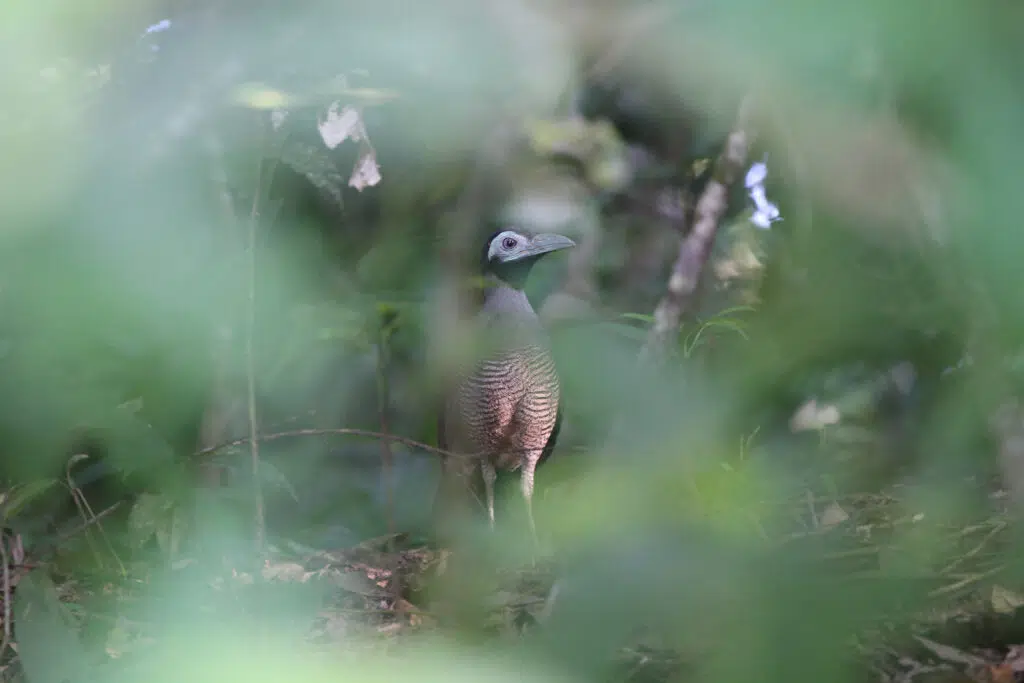
MORE THAN JUST HABITAT LOSS
Central America is another of the world’s biodiversity hotspots where satellite data have revealed forest loss to be even worse than feared. The region has undergone several periods of deforestation, dating back to ancient Mayan civilisations, before European colonisation saw a
proliferation of plantations during the 19th century. Over the last 50 years there has been an increasing rate of deforestation to clear land for cash crops and cattle production for European and North American markets. Forest loss has accelerated substantially since 2015, particularly outside of protected areas, and there are now just five large, intact forests remaining in Central America.
This devastating loss of habitat is a major cause for concern, and has resulted in White-throated Shrike-tanager, a species predominantly found deep within lowland forests, to be flagged for conservation attention for the first time. However, as patches of forest become smaller and more isolated, often accompanied by a proliferation of logging roads, deforestation also tends to exacerbate other threats to species.
Hunting pressure, whether for food or to supply the lucrative pet trade, is one of these, as once remote forests become progressively more accessible. In Central America, the devastating combination of forest loss and hunting has seen the uplisting of three bird species previously considered Least Concern: Slaty-breasted Tinamou (to Vulnerable), and Tawny-faced Quail and Black-eared Wood-quail (both to Near Threatened).
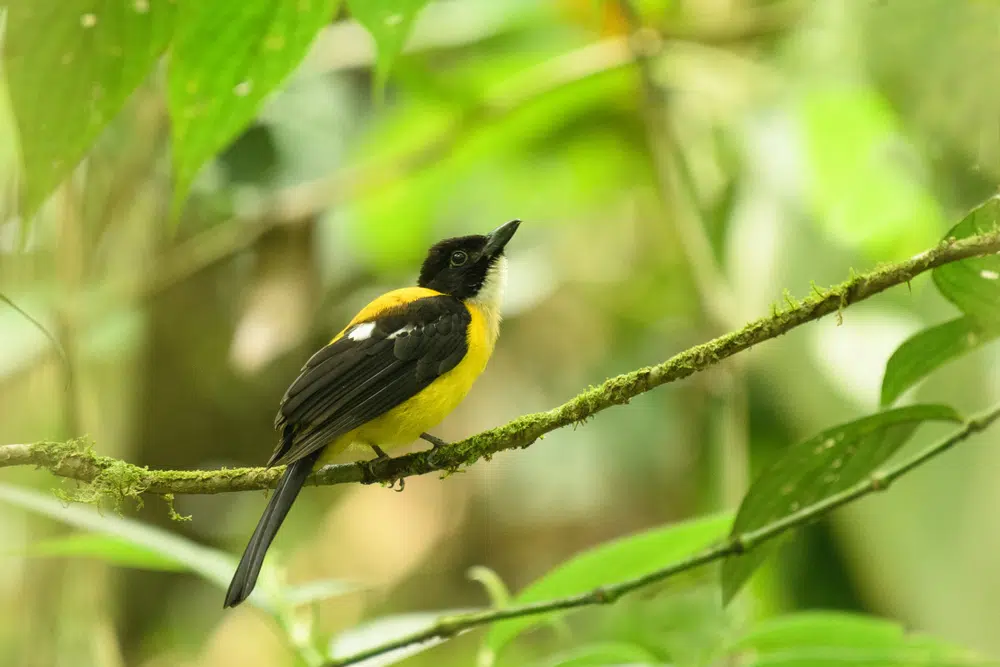
A TALE OF TWO APALISES
Although deforestation in the Americas and South-East Asia often dominates headlines, it has also taken its toll in Africa. Here, its drivers are as complex as the continent is vast, ranging from policies focused on increasing revenue from extractive industries and food production at the expense of forest to the impacts of natural disasters and a lack of alternatives to forest resources for heating and cooking in rural areas. In the most recent Red List update, changes made to the statuses of two apalis species – small, long-tailed warbler-like insectivores – reflect the impacts on birds.
Sharpe’s Apalis occurs across the lowlands of the Upper Guinea forests of West Africa, a once vast tract of forest. Unfortunately, recent remote sensing data report 22% of forest cover loss within this species’ range over the last decade alone, leading to a Near Threatened assessment. This is much faster than previously recorded, despite deforestation affecting this region for more than a century. The major drivers of deforestation here are unregulated logging and slash-and-burn agriculture, all magnified by an increasing human population, but significant areas have also been lost to mining activities and large-scale agriculture for other key global commodities such as rubber, cocoa and oil palm.
While the loss of West Africa’s rainforests is undoubtedly a tragedy, the issue is well known within the conservation community. Valiant efforts are ongoing from several conservation organisations, including BirdLife partners, to ensure that key areas of the range of Sharpe’s Apalis are safeguarded in the future, and these continue to provide hope that forest loss won’t drive the species to extinction.
The long-term outlook for the closely related Chirinda Apalis, recently assessed as Vulnerable to extinction, is even bleaker. Found on the opposite side of Africa in the highlands along the border of Zimbabwe and Mozambique, the rate of forest loss in this area has historically been poorly documented. However, emerging data highlight its severity, with over a third of the region’s forest cover being lost in the last decade alone.
This is largely driven by a lack of sustainable livelihood opportunities for local communities, which has led to the extensive exploitation of forests for charcoal production and shifting agriculture. The tragic impacts of 2019’s Cyclone Idai, which is estimated to have killed more than 1,500 people and displaced 400,000 in the region, has accelerated this exploitation against a background of human suffering.
“This rate of forest loss is clearly not sustainable,” warns Rob Martin, Senior Red List Officer for BirdLife. “However, there are no signs of it stopping any time soon and, unlike its West African counterpart, it is not clear that any of Chiranda Apalis’s range is adequately protected.”
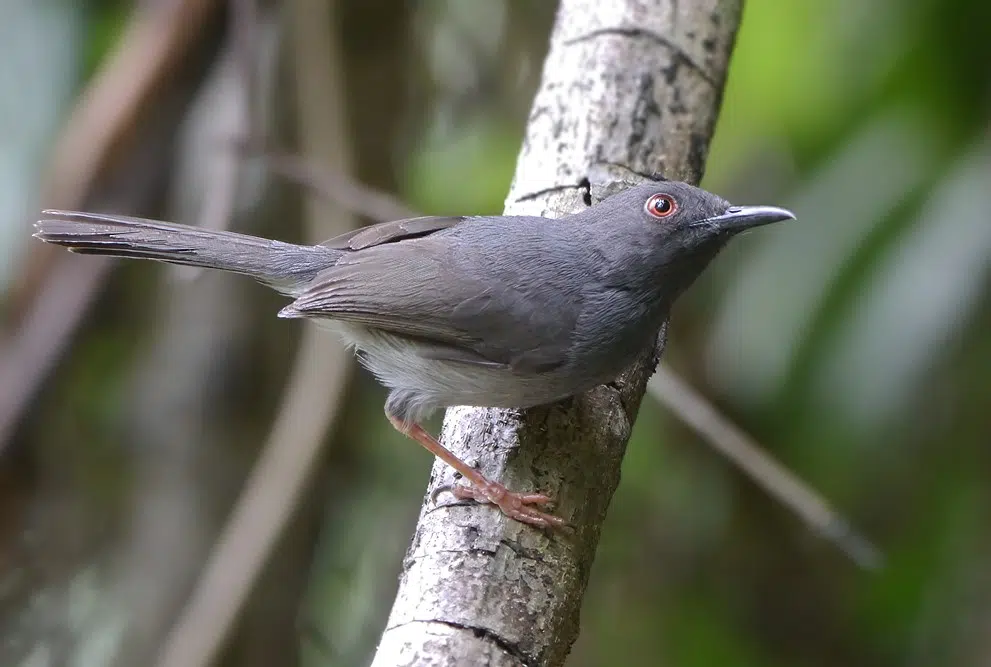
PROTECT TO SURVIVE
These changes to the IUCN Red List reflect the urgency of protecting tropical forests and the need to end, and ultimately reverse, deforestation. This endeavour is a core pillar of the BirdLife partnership, which works closely with local communities around the world to safeguard these iconic ecosystems. Over the last decade, BirdLife and its partners have established and upgraded several large forest protected areas, including Greater Gola in Sierra Leone and Liberia, Madagascar’s Tsitongambarika and Siem Pang in Cambodia.
To scale up the protection and restoration of forests, BirdLife has also joined forces with the Wildlife Conservation Society (WCS) and WWF since 2016 to form Trillion Trees, a partnership that has since helped protect and restore over 83 million ha of forest across the world. Stemming from this is BirdLife’s ‘Forest Accelerator’, an ambitious attempt to break away from traditional funding models and move towards finding innovative and sustainable conservation finance solutions, allowing local communities around the world to benefit from protecting and restoring forests.
For instance, in the Atlantic Forest of South America, which has had some of the world’s highest deforestation rates, BirdLife partners Guyra Paraguay and Aves Argentinas are helping communities to cultivate yerba mate under the forest canopy, thus keeping forests intact. Meanwhile in Cambodia’s Lomphat Wildlife Sanctuary – home to an astonishing six Critically Endangered bird species, including the newly uplisted Masked Finfoot – BirdLife partner NatureLife Cambodia is building on a successful ‘Ibis Rice’ scheme to develop a programme that will implement several community-based projects to avoid deforestation, in turn producing carbon credits to fund conservation.
Even in protected areas, hunting and forest degradation continue to threaten many species, to the extent that it is vital that robust enforcement measures are put in place. Across the world, BirdLife partners are aiding this, including the RSPB (BirdLife in the UK), which is training community members as rangers in Sierra Leone, and the Haribon Foundation (BirdLife Philippines), which is working closely with the indigenous Bantay Gubat (‘Forest Guards’) to monitor and report illegal activities across several of the country’s forests.
These are just a few examples of projects undertaken by BirdLife’s Forest Programme. While undoubtedly essential in joint efforts to tackle both the biodiversity and climate crises, the widespread impacts of accelerating forest loss, so starkly highlighted in 2022’s Red List update, points to the urgency of drastically scaling up such projects, including the need for government involvement.
Lula da Silva’s win over Jair Bolsonaro in the Brazilian presidential election in late 2022, and his immediate pledge to end deforestation in the Amazon, offered some much-needed hope for the natural world. It is now vital that leaders in other tropical regions commit to – and importantly act on – similarly ambitious goals, and that those in developed nations, whose interminable demand drives so much of this devastation, pledge to support these efforts wholeheartedly.
